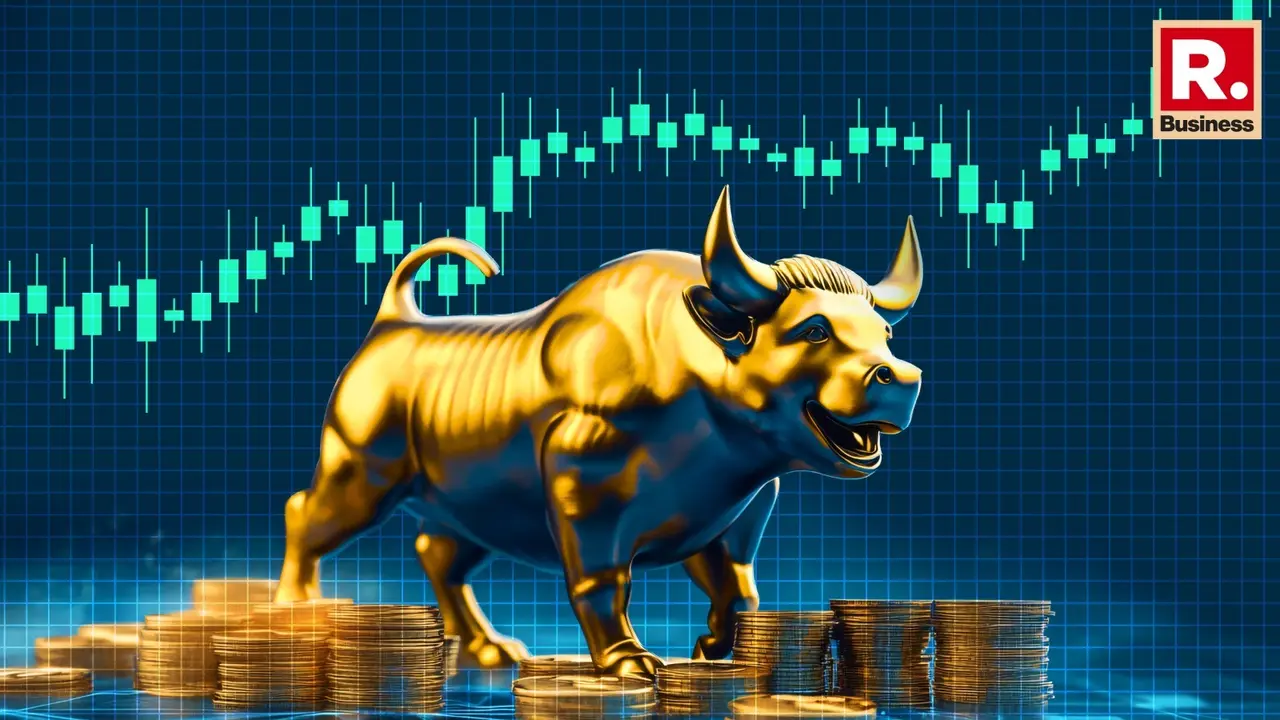Updated 3 June 2025 at 15:46 IST
How Are Stock Market NSE, BSE Points Calculated? Here's How Sensex And Nifty Work
The Sensex and Nifty are the main indicators of how the Indian stock market is performing. Sensex tracks 30 top companies on the BSE, and Nifty tracks 50 top companies on the NSE. Their values are calculated using the free-float market capitalisation of these companies, which means only the shares available for public trading are counted.
- Republic Business
- 4 min read

The Sensex and Nifty are like scoreboards for the Indian stock market. They help people understand whether the market is going up or down.
Sensex represents the top 30 companies listed on the Bombay Stock Exchange (BSE), while Nifty shows the performance of the top 50 companies on the National Stock Exchange (NSE).
What Is Market Capitalisation?
To understand how the Sensex is calculated, we need to know what market capitalisation means. It is the total value of a company in the stock market. You get this number by multiplying the number of shares a company has with the price of each share.
For example, if a company has 1,000 shares and each share costs Rs 20, then the company’s total value in the market is 1,000 multiplied by 20, which is Rs 20,000.
Advertisement
What Is Free-Float Market Capitalisation?
Now, not all shares are available for people to buy and sell. Some shares are kept by the company’s founders, promoters, or the government, and they don’t trade these shares every day. Only the shares that are available to the general public are called free-float shares.
So, free-float market capitalisation means the value of only those shares that can be traded in the stock market.
Advertisement
For example, let’s say a company has 1,000 shares in total. Out of these, only 800 are available to the public, and the other 200 are held by the founders.
If each share is worth Rs 20, then the free-float market capitalisation would be 800 multiplied by 20, which is Rs 16,000. This is the value that is used when calculating the Sensex.
How Is Sensex Calculated?
The Sensex is calculated by taking the free-float market capitalisation of all 30 companies and comparing it to the base year’s value. Let’s take a very simple example to understand this.
Suppose we add up the free-float market values of all 30 companies, and the total comes to Rs 560,000. In the base year 1978-79, the total market value of these companies was Rs 100,000. Since the Sensex value was set at 100 that year, we now calculate the new Sensex as follows:
We divide the current total value (Rs 560,000) by the base year value (Rs 100,000), which gives us 5.6. Then we multiply that by 100, which gives us 560. This means the Sensex value today is 560, showing that the market value has grown over time.
How Do Points Change in Sensex or Nifty?
So, Rs 100 lakh crore divided by 1.42857 crore gives a Sensex value of 70,000 points. If company share prices rise and the total market cap becomes Rs 100.5 lakh crore, then the Sensex would rise to 70,350 points, showing a 350-point increase.
The index divisor is very important because it protects the index from showing false signals. For instance, if a company’s share price drops because of a stock split, the actual value of the company hasn’t changed, but the price looks lower.
Without adjusting the divisor, the index might fall, even though the market didn’t really lose value. By updating the divisor, these technical changes don’t affect the index number unfairly. This helps investors track genuine market performance over time.
How Are These 30 Companies Chosen?
The BSE has some rules for picking these companies. First, the company must be listed on the BSE and must have been trading regularly for at least a year.
Second, it should be one of the top companies in terms of size or market capitalisation.
Third, the company’s shares should be actively traded, meaning people buy and sell them often.
Lastly, the company should have a good record and be trusted in the market. A committee at the BSE checks and reviews the list every few months to make sure only the best companies are included.
Published By : Anubhav Maurya
Published On: 3 June 2025 at 15:13 IST
